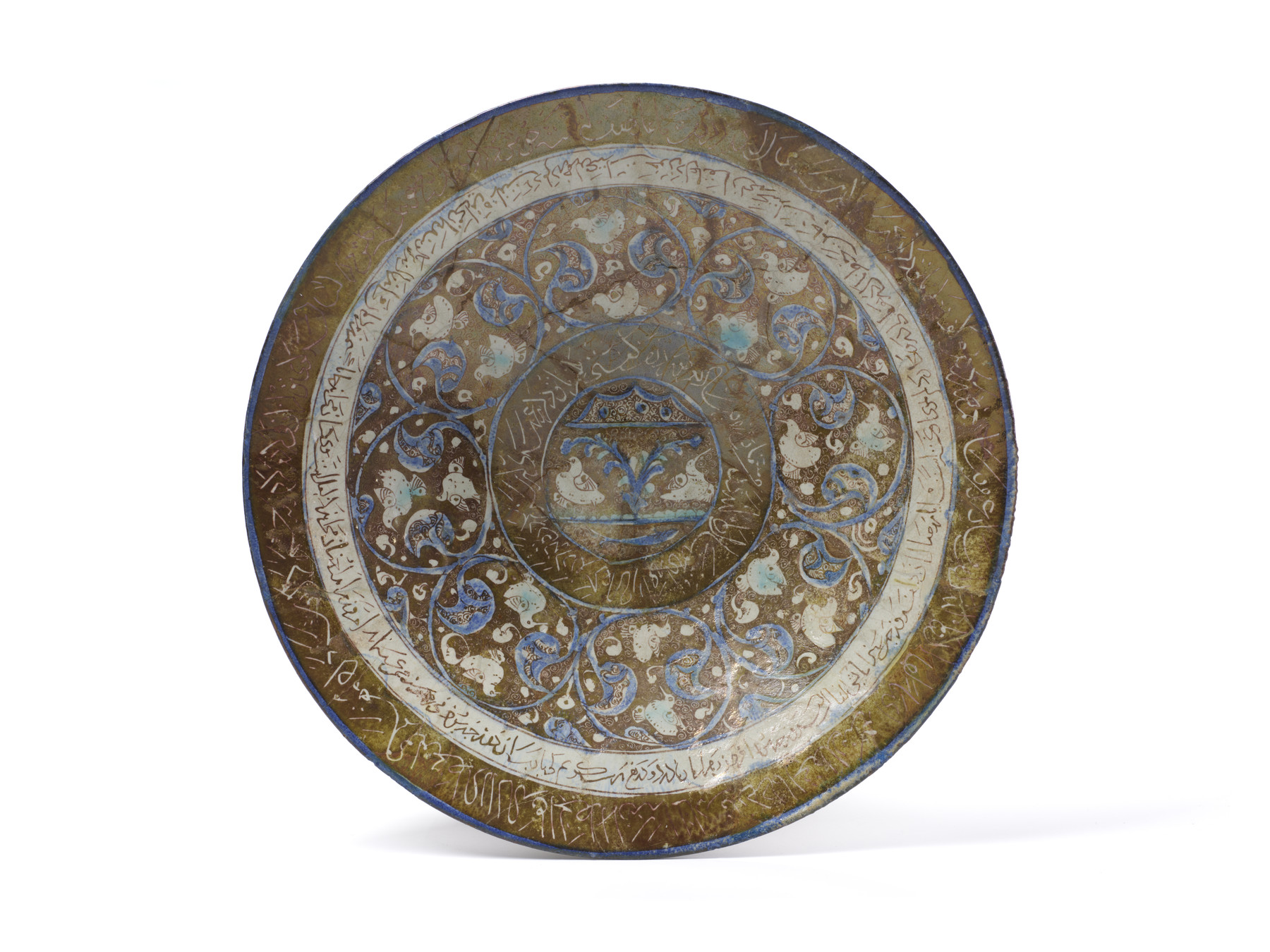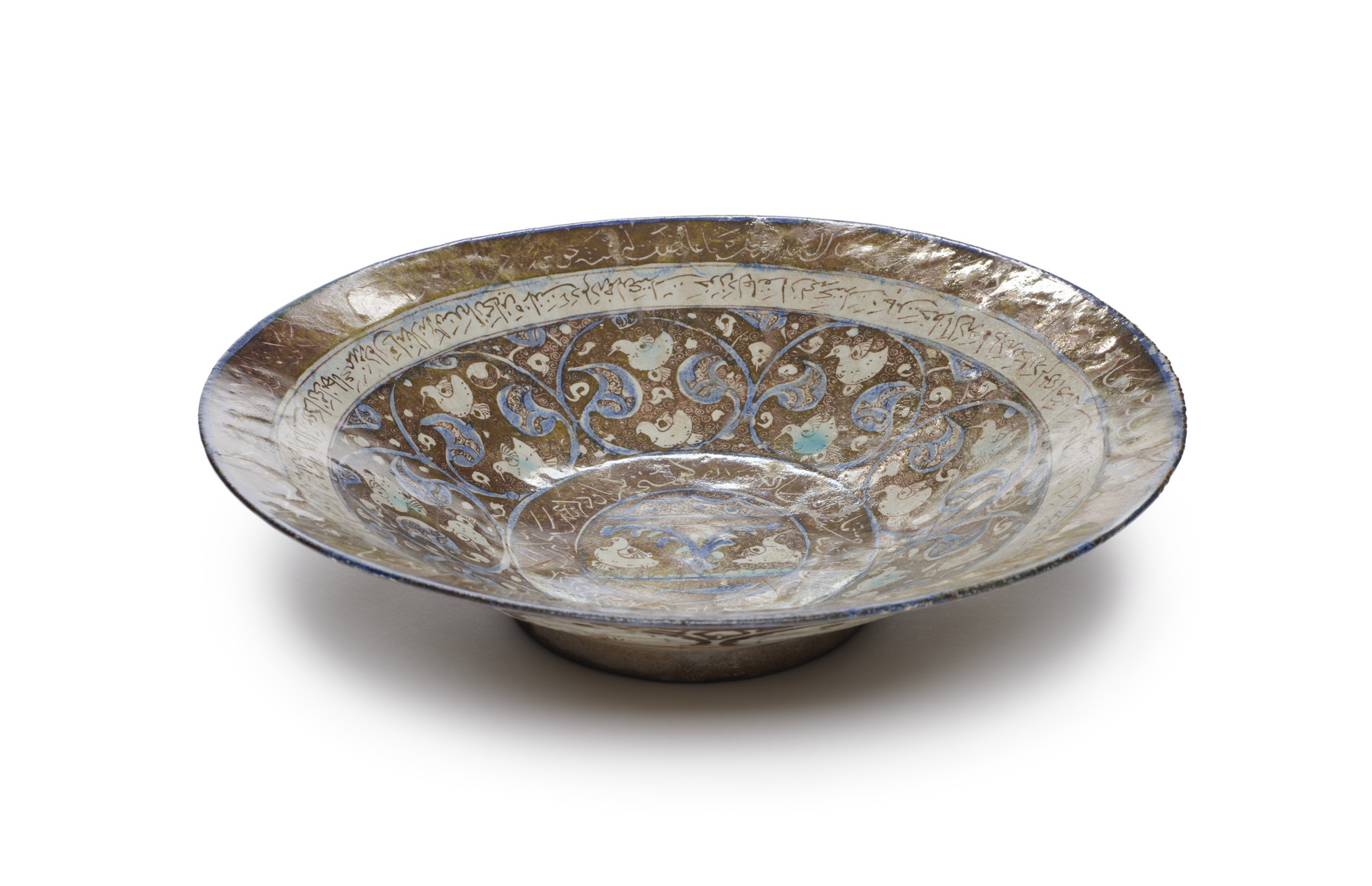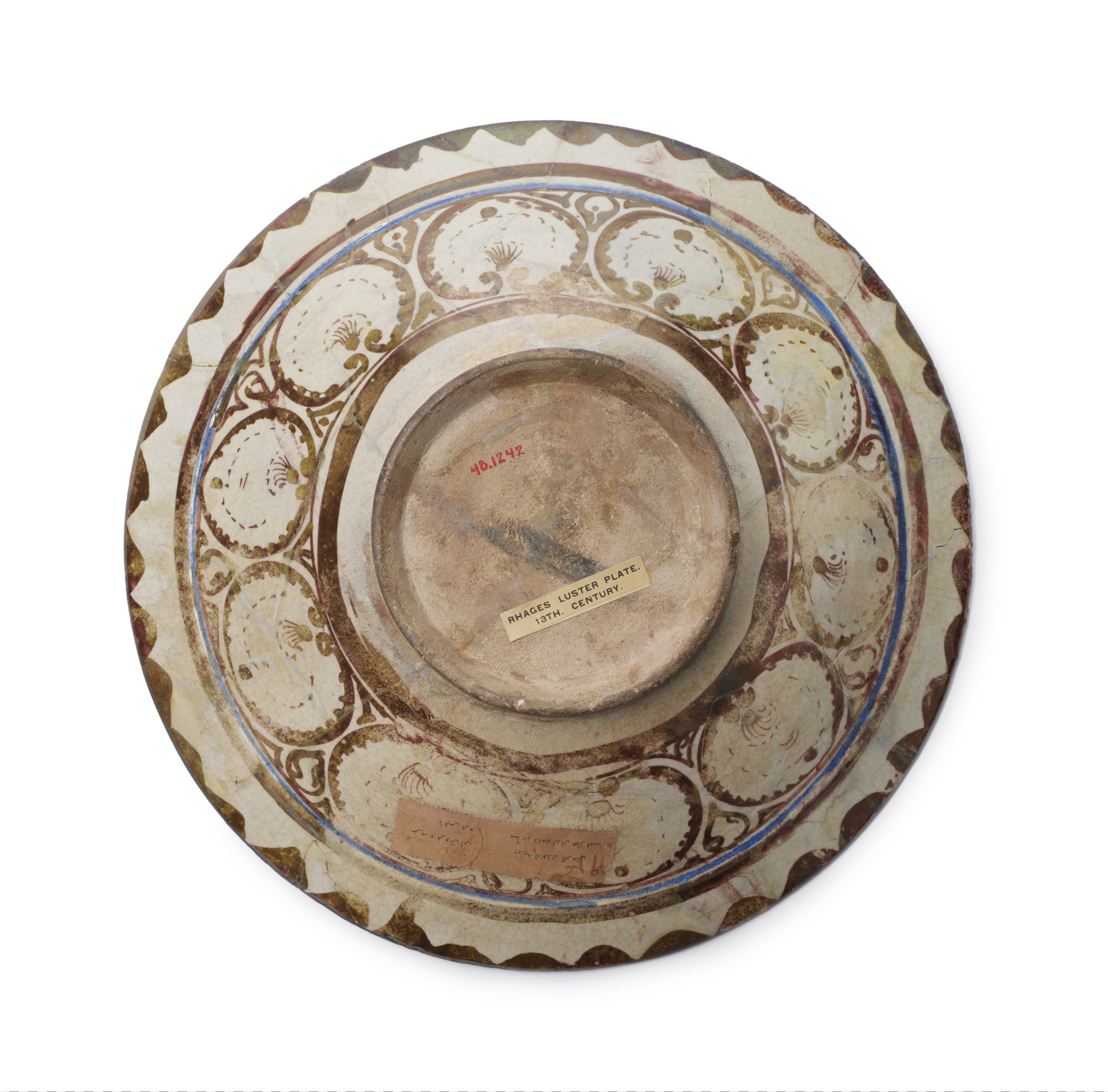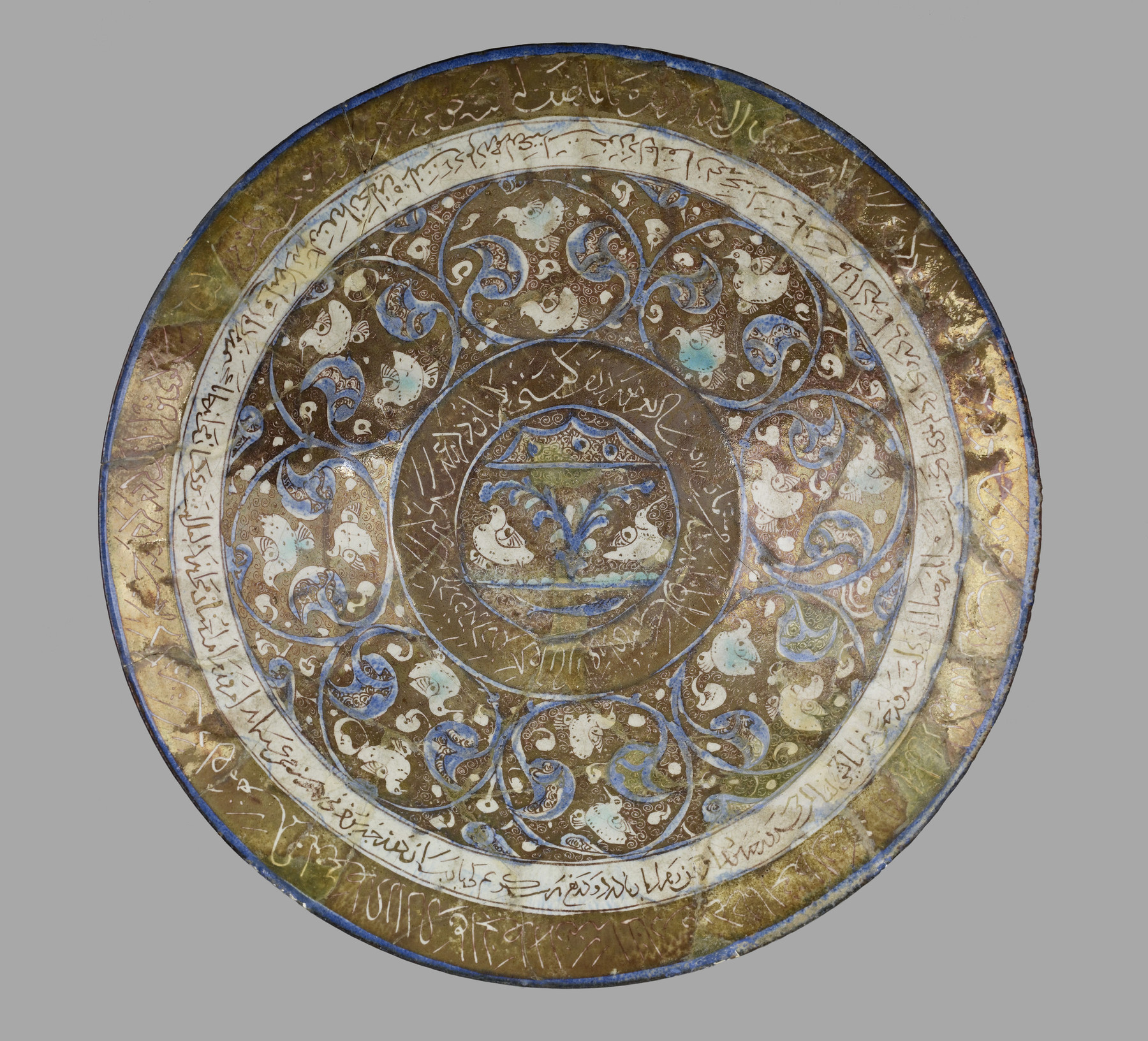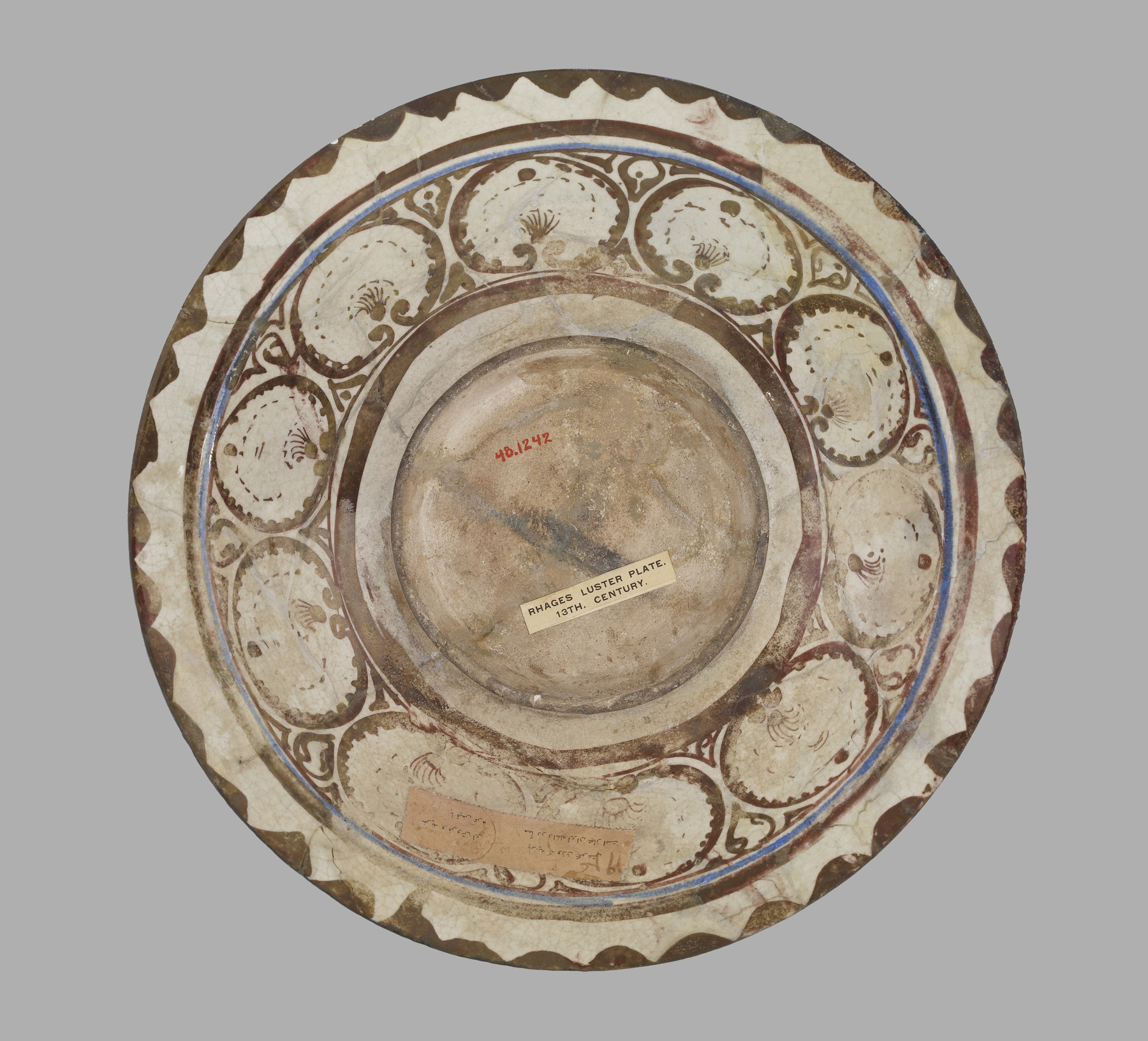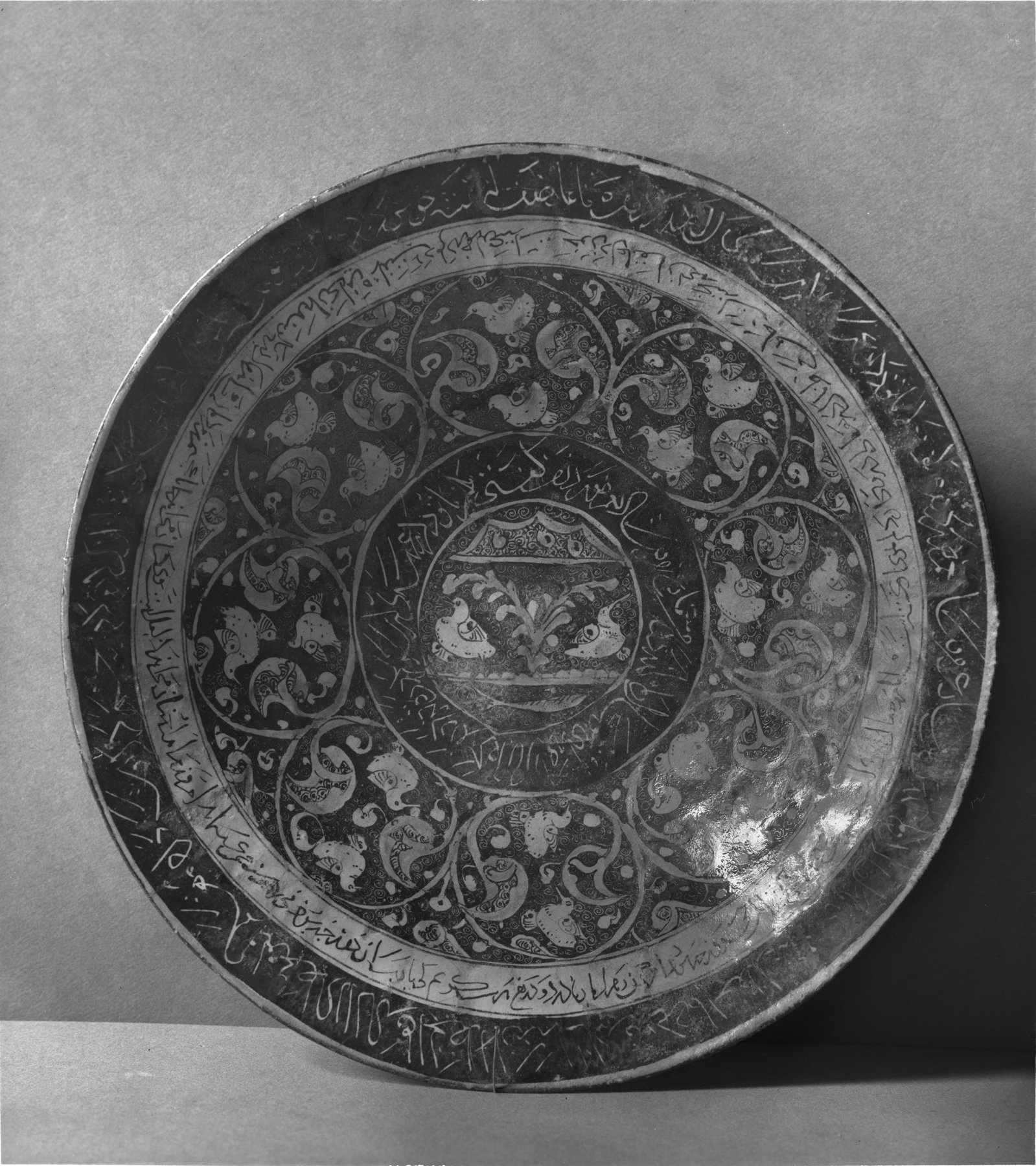Lusterware Plate with Birds and Inscriptions
(Islamic World )
With a lustrous shine that resembles the glisten of precious metals, this dish would have enhanced any elegant table of 13th-century Iran. Collected by the ruling and mercantile elite, lusterware was one of the most prestigious ceramics of the medieval Islamic world. The metallic glaze and complex firing techniques required to produce the luxury ware were developed and perfected by skilled experts. In 12th to 14th-century Iran, lusterware ceramicists were based at Kashan, where this platter was made.
Provenance
Provenance (from the French provenir, 'to come from/forth') is the chronology of the ownership, custody, or location of a historical object. Learn more about provenance at the Walters.
Dikran Kelekian, New York and Paris, [date and mode of acquisition unknown]; Henry Walters, Baltimore, 1922, by purchase; Walters Art Museum, 1931, by bequest.
Geographies
Iran, Kashan (Place of Origin)
Measurements
H: 3 1/8 x Diam: 13 1/16 in. (8 x 33.1 cm)
Credit Line
Acquired by Henry Walters, 1922
Accession Number
In libraries, galleries, museums, and archives, an accession number is a unique identifier assigned to each object in the collection.
In libraries, galleries, museums, and archives, an accession number is a unique identifier assigned to each object in the collection.
48.1242

